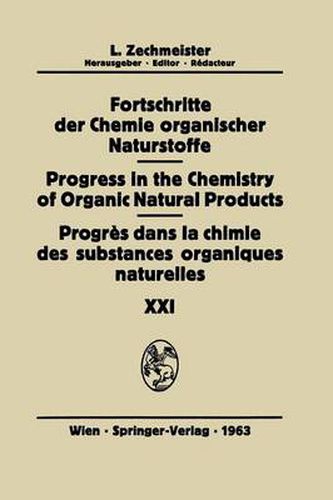Readings Newsletter
Become a Readings Member to make your shopping experience even easier.
Sign in or sign up for free!
You’re not far away from qualifying for FREE standard shipping within Australia
You’ve qualified for FREE standard shipping within Australia
The cart is loading…






This title is printed to order. This book may have been self-published. If so, we cannot guarantee the quality of the content. In the main most books will have gone through the editing process however some may not. We therefore suggest that you be aware of this before ordering this book. If in doubt check either the author or publisher’s details as we are unable to accept any returns unless they are faulty. Please contact us if you have any questions.
During the early 1950’s there appeared reports, from time to time of the presence among the products elaborated by actinomycetes of antifungal antibiotics which exhibited very similar and very characteristic multipeaked ultraviolet absorption spectra. In 1954, with a good number of examples on record, these spectra were analyzed and identified as those of straight-chain conjugated polyenes, comprising tetraenes, pentaenes, hexaenes and heptaenes (85, I30). These antibiotics have since been commonly referred to as the polyene antifungal antibiotics to distinguish them from a host of other miscellaneous antibiotics which also have antifungal properties. Within the next few years, reports of discoveries of new members of this class multiplied rapidly, and almost sixty are now known. Unquestionably, a number of these will eventually be found to be identical with others, as has already happened in several instances: for example, the tetraene tennecetin proved to be a rediscovery of pimaricin (34), and in the methyl- pentaenes moldcidin E has been identified with pentamycin (83), and lagosin appears to be indistinguishable from fungichromin (22). Those that have been purified have turned out to be of fairly high molecular weight (ca. 700-1300) and all appear to be substances of rather similar molecular structure. So far only three, pimaricin, fungi- chromin (lagosin) and filipin, have been structurally elucidated.
$9.00 standard shipping within Australia
FREE standard shipping within Australia for orders over $100.00
Express & International shipping calculated at checkout
This title is printed to order. This book may have been self-published. If so, we cannot guarantee the quality of the content. In the main most books will have gone through the editing process however some may not. We therefore suggest that you be aware of this before ordering this book. If in doubt check either the author or publisher’s details as we are unable to accept any returns unless they are faulty. Please contact us if you have any questions.
During the early 1950’s there appeared reports, from time to time of the presence among the products elaborated by actinomycetes of antifungal antibiotics which exhibited very similar and very characteristic multipeaked ultraviolet absorption spectra. In 1954, with a good number of examples on record, these spectra were analyzed and identified as those of straight-chain conjugated polyenes, comprising tetraenes, pentaenes, hexaenes and heptaenes (85, I30). These antibiotics have since been commonly referred to as the polyene antifungal antibiotics to distinguish them from a host of other miscellaneous antibiotics which also have antifungal properties. Within the next few years, reports of discoveries of new members of this class multiplied rapidly, and almost sixty are now known. Unquestionably, a number of these will eventually be found to be identical with others, as has already happened in several instances: for example, the tetraene tennecetin proved to be a rediscovery of pimaricin (34), and in the methyl- pentaenes moldcidin E has been identified with pentamycin (83), and lagosin appears to be indistinguishable from fungichromin (22). Those that have been purified have turned out to be of fairly high molecular weight (ca. 700-1300) and all appear to be substances of rather similar molecular structure. So far only three, pimaricin, fungi- chromin (lagosin) and filipin, have been structurally elucidated.